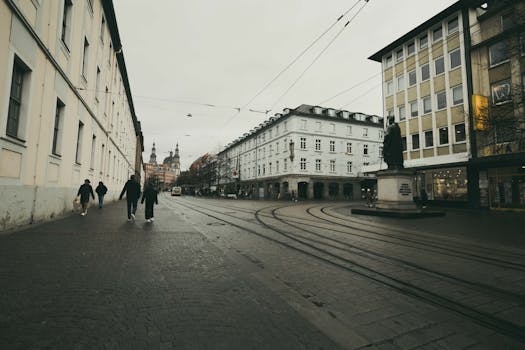
Urban Green Spaces: The Future of Outdoor Living in European Cities by 2025
Urban Green Spaces: The Future of Outdoor Living in European Cities by 2025 is a concept that has gained significant attention in recent years. As the world becomes increasingly urbanized, cities are facing numerous challenges, including air pollution, heat islands, and lack of green areas. However, by incorporating urban green spaces into city planning, European cities can mitigate these issues and create a more sustainable and livable environment for their citizens.
Introduction to Urban Green Spaces
Urban green spaces refer to areas in cities that are dedicated to parks, gardens, green roofs, and other types of vegetation. These spaces provide numerous benefits, including improved air quality, reduced noise pollution, and enhanced biodiversity. Moreover, urban green spaces offer opportunities for recreation, socialization, and relaxation, which are essential for both physical and mental well-being.
Benefits of Urban Green Spaces
The benefits of urban green spaces are numerous and well-documented. Some of the most significant advantages include:
- Improved air quality: Urban green spaces can absorb pollutants and particulate matter, improving air quality and reducing the risk of respiratory diseases.
- Reduced urban heat island effect: Green spaces can mitigate the urban heat island effect by providing shade, cooling the air through evapotranspiration, and reducing the amount of heat-absorbing surfaces.
- Enhanced biodiversity: Urban green spaces can provide habitats for various plant and animal species, increasing biodiversity and supporting ecosystem services.
- Recreational opportunities: Urban green spaces offer areas for recreation, socialization, and relaxation, which are essential for both physical and mental well-being.
- Economic benefits: Urban green spaces can increase property values, attract businesses and tourism, and reduce healthcare costs by promoting physical activity and mental well-being.
Examples of Urban Green Spaces in European Cities
Many European cities have incorporated urban green spaces into their planning, with impressive results. Some notable examples include:
- Barcelona’s Superblock program: This initiative has converted numerous streets into pedestrian-friendly green spaces, reducing traffic congestion and improving air quality.
- Copenhagen’s green roof initiative: The city has implemented a policy requiring all new buildings to incorporate green roofs, which provide insulation, reduce stormwater runoff, and create habitats for wildlife.
- Amsterdam’s urban parks: The city has invested heavily in creating and maintaining urban parks, which offer recreational opportunities, improve air quality, and enhance biodiversity.
Challenges and Future Directions
While urban green spaces offer numerous benefits, there are also challenges to be addressed. Some of the most significant obstacles include:
- Funding: Creating and maintaining urban green spaces requires significant funding, which can be a challenge for cities with limited budgets.
- Space constraints: Many cities face space constraints, making it difficult to allocate areas for green spaces.
- Community engagement: Urban green spaces require community engagement and participation to ensure their success and maintenance.
To overcome these challenges, cities can explore innovative solutions, such as:
- Green infrastructure: Incorporating green infrastructure, such as green roofs, green walls, and rain gardens, into building design and urban planning.
- Community-led initiatives: Encouraging community-led initiatives and participatory planning processes to ensure that urban green spaces meet the needs and aspirations of local residents.
- Public-private partnerships: Collaborating with private sector entities to secure funding and expertise for urban green space development and maintenance.
Conclusion
Urban green spaces are a vital component of sustainable and livable cities. By incorporating these spaces into city planning, European cities can promote sustainable living, enhance the quality of life for citizens, and mitigate the challenges associated with urbanization. As we look to the future, it is essential to prioritize urban green spaces and explore innovative solutions to overcome the challenges associated with their creation and maintenance.






